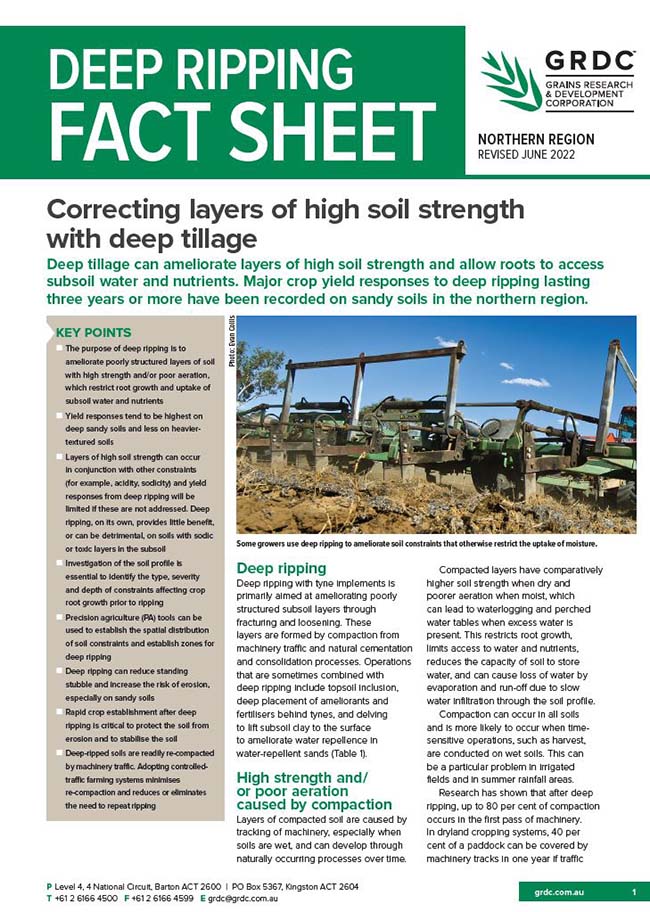Deep ripping: Correcting layers of high soil strength with deep tillage - northern region
Deep ripping: Correcting layers of high soil strength with deep tillage - northern region
Published: 15 Jun 2022
Deep tillage can ameliorate layers of high soil strength and allow roots to access subsoil water and nutrients. Major crop yield responses to deep ripping lasting three years or more have been recorded on sandy soils in the northern region.
Key points
- The purpose of deep ripping is to ameliorate poorly structured layers of soil with high strength and/or poor aeration, which restrict root growth and uptake of subsoil water and nutrients
- Yield responses tend to be highest on deep sandy soils and less on heavier textured soils
- Layers of high soil strength can occur in conjunction with other constraints (for example, acidity, sodicity) and yield responses from deep ripping will be limited if these are not addressed. Deep ripping, on its own, provides little benefit, or can be detrimental, on soils with sodic or toxic layers in the subsoil
- Investigation of the soil profile is essential to identify the type, severity and depth of constraints affecting crop root growth prior to ripping
- Precision agriculture (PA) tools can be used to establish the spatial distribution of soil constraints and establish zones for deep ripping
- Deep ripping can reduce standing stubble and increase the risk of erosion, especially on sandy soils
- Rapid crop establishment after deep ripping is critical to protect the soil from erosion and to stabilise the soil
- Deep-ripped soils are readily re-compacted by machinery traffic. Adopting controlledtraffic farming systems minimises re-compaction and reduces or eliminates the need to repeat ripping.
Download PDF
Region: North

